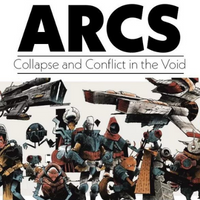01 October 2022
|
We take a look at the endlessly replayable Betrayal at House on the Hill – and discover our inner traitors
Words by Christopher John Eggett
Being a traitor is one of our favourite things in games. Often though, we like it when offered up as a strategy – a choice you have to make about stabbing people in the back. But there is another way, where becoming the bad guy is forced on you – and for many this is much better. We don’t all want to be as mean as I do at the table. Instead, if the game flips your win condition into ‘murder your friends’ what choice do you have really?
Betrayal at House on the Hill is the perfect game for this – it’s got that mix of being a little bit old school in its design (sometimes feeling a bit clunky, charmingly so) while also being simple enough that it never gets in the way. If you’ve got a group that doesn’t like turning on one another as much as you do, then this is a way to get them into it.
WHAT IS IT?
Betrayal at House on the Hill is a game of exploring a spooky manor, trying to work out what is going on. It’s pretty much Scooby-Doo, except here there’s no real benefit to not splitting up. As players explore they draw a tile off the top of the room tile pile and place it, assuming it matches the floor they’re currently on. Many of these tiles will indicate that an event, omen, or item card is drawn – which will end your turn and make something happen, usually.
The first part of the game is characterised by this exploration, moving room to room, occasionally interacting with something weird – a horrible sound, an odd smell, a strange box you can open… if you dare. In this phase players are hoping to gather items for the most part, looking for things that might help them towards the end of the game, or looking for the occasional upgrade to their stats which are the meat and potatoes of the game’s dice rolling mechanic.
Every now and again an event or omen will demand a test from a player, they’ll roll a number of six-sided dice depending on their statistic for their skill. If they’ve got a two in Sanity, they’ll roll two dice for example, if they meet or beat the number, they’ll get a reward, or simply survive. These skills are presented as notches on the player board meaning you might have a two in strength at the third notch, as well as the second. Often a negative effect of a failed roll or event will be that the player knocks down their stat by one notch – because each character has different clumping of stats, this means you might be able to stick to the same number of dice, but be close to a downgrade, or just downgrade a stat (and dice) for a stat you think you won’t need as much.
The haunt is triggered by rolls caused by omen cards. Draw one, complete it, and then roll six dice – if the number is lower than the total number of omens revealed so far, a Haunt begins. This is where the game gets a bit spicy. Firstly the player who reveals the haunt looks up the combination of the room and the omen to discover which haunt is about to befall the group.
From then on, new rules are added, the traitor might be revealed, or be a secret. There’s fifty scenarios to draw from, which is a significant reason that there’s such a strong following for this game. There’s simply so much to explore within it, and even experienced players will be relishing the chance to try yet another new scenario.
For example, with a certain combination you’ll end up with an infectious disease turning people into hidden monsters. The person who has the disease is secret, as every player gets two tokens – only one of which for the entire group is the infectious token. When players meet in a room, they randomly swap one of their two tokens with another player, which might be the infection token. Once infected, these players are on the traitor team, secretly trying to end the investigator's mission. The investigators need to create a treatment in the lab, and inoculate everyone to the disease. But obviously they need to be in the same place to do that. Oh, and if the infected players are killed they become a nasty, powerful, monster instead.
And that’s just one scenario that can crop up in Betrayal at House on the Hill. There’s 49 other bonkers ideas in the base game’s box.

WHY SHOULD YOU PLAY IT?
It might feel like an odd comparison, but the game it puts us most in mind of is the ever-popular FLUXX. While the simple game of changing the rules every few seconds is a lot more chaotic than Betrayal at House on the Hill the charm of just not knowing what’s coming next is the same. Players can guarantee that something cool or weird is going to happen sooner rather than later (depending on how quick omens get pulled out), so the early stages are all about trying to find useful and interesting rooms. For example, a game where you find the magic elevator that will take you to a random floor based on a dice roll, can be extremely useful in a number of situations – i.e. running away or chasing someone. Equally, even mundane rooms like the greenhouse or patio can offer useful things in scenarios where grabbing some medicinal leaves can be helpful.
This first part of the game is like trying to build the Winchester house, but a bit more useful. The second part is where the game proper begins, yet if you were to drop people in at this point – explaining this set of rules instead of the open exploration of the start – many might drop out. Some don’t want that pressure of violently ending their friend’s turns after all. But in the context of the Haunt kicking in, players are suddenly up for it – they’re committed to the weird mansion they’ve built, they’re intrigued by the new rules that have come to the group somewhat randomly. And maybe that’s it, they’re not being asked to be mean by someone they know. They’re being told that the game simply has to be this way. Which it does. You can watch as players work together to overcome the traitor, maybe even sacrificing themselves for the good of the team, or even better, turn on one another in an amusing ‘gotcha’ moment.
Betrayal at House on the Hill isn’t complex or refined, but it’s got just the right amount of intrigue and a dedicated twist to drive you and your group to visit again and again. As you never know who is going to be the traitor this time. Throw in the expansions (extensions? Like a horror themed conservatory?) and you’ve got a game that will keep giving for years – even if what it’s giving is a swift board game death at the hands of a loved one.
Looking for more?

This review came from Tabletop Gaming Magazine, which is home to all of the latest and greatest tabletop goodness. Whether you're a board gamer, card gamer, wargamer, RPG player or all of the above, find your copy here.
Get your magazine hereRead More...

If you want to read more about one of the most hotly anticipated games of the year, check out our interview with Cole Wehrle on ARCS! A new game from the designer of Root and Oath, and we've got all you need to know.
To infinity and beyond
Sometimes we may include links to online retailers, from which we might receive a commission if you make a purchase. Affiliate links do not influence editorial coverage and will only be used when covering relevant products







